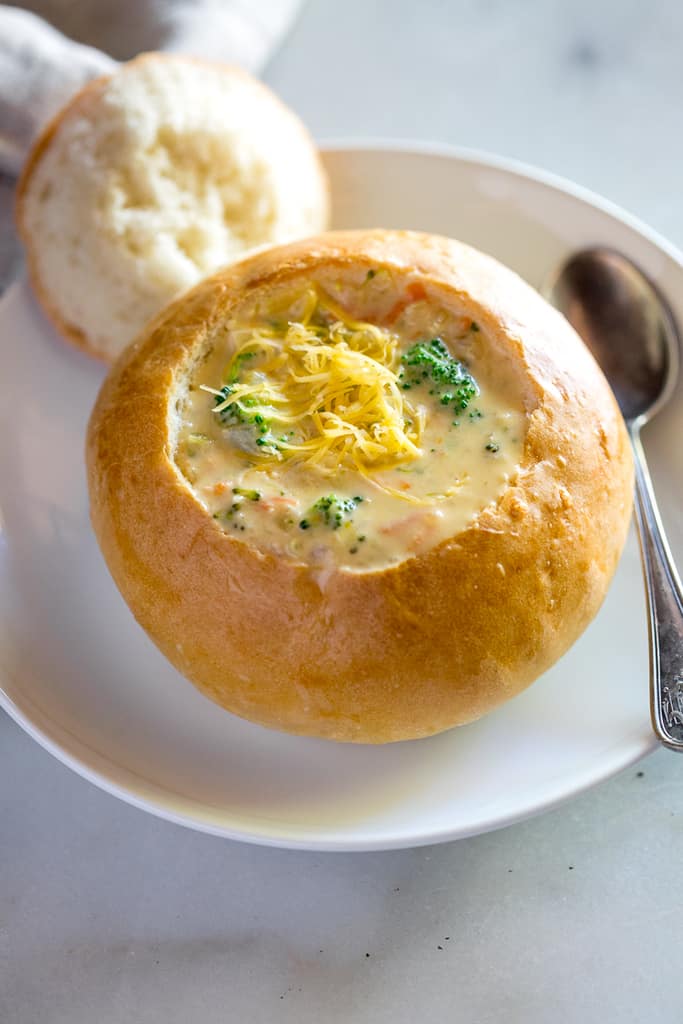Bread Soup
Zuppa di Pane
MAKES: 4 servings
TIME: At least 1 hour
Not literally bread soup but bean and vegetable soup with bread. When I first ate this in Tuscany, it was served with 2 condiments extra virgin olive oil and chopped onion and I’ve made it that way ever since. It’s traditionally prepared with fresh borlotti or other shell beans, and if you find these (and in fall you often can), your cooking time will be substantially shorter and the flavor somewhat more intense. But almost any dried pink or spotted bean will do nicely.
11/2 cups pinto, cranberry, or other pink or spotted beans, washed, picked over, and soaked if time allows (see Cooking Beans, the Quick-Soak Way)
6 cups vegetable stock or water, or more as needed
2 medium onions, chopped
1 teaspoon fresh thyme leaves or 1/2 teaspoon dried
2 cups shredded Savoy cabbage, spinach, kale, or collards
Salt and freshly ground black pepper
Large Cubed Croutons
Chopped parsley leaves for garnish
Extra virgin olive oil for serving
01 Drain the beans if you’ve soaked them, then combine them in a saucepan with the stock, half the onions, and the thyme. Bring to a boil over medium-high heat, then turn the heat down so the mixture simmers steadily. Cook, stirring occasionally, until the beans are very soft, at least 1 hour; add more liquid as necessary so the mixture remains soupy. (You may prepare the soup in advance up to this point. Cover, refrigerate for up to 2 days, and reheat gently before proceeding.)
02 Add whatever greens you’re using, along with some salt and pepper, and continue to cook until tender, from 5 minutes for spinach to about 15 for kale. Stir in the croutons, then garnish with the parsley. Serve with olive oil and the remaining onion.
Variation
Chestnut-Bean Soup. A wonderful way to integrate chestnuts, which are in season from fall through early winter: When the beans begin to get tender, add 1 cup or more peeled chestnuts (see Preparing Chestnuts), whole or halved. Proceed with the recipe, omitting the croutons.
15 Beans in 8 Soups
Use these suggestions as a starting point for adding beans to soups, then try your own combinations. The easiest way is to stir 1/2 to 1 cup of precooked beans into the pot at the very end of cooking and heat through before serving.
Cooking beans in the soup rather than adding precooked beans benefits both flavor and nutrition, but you will have to make adjustments. First you must compensate for the liquid they will absorb with extra water or stock; since beans are an added, not featured, ingredient here, I use only about 1/2 cup uncooked beans and about 1 cup extra liquid. You’ll also have to cook the soup longer, sometimes considerably so. (See The Basics of Legumes for what you need to know about selecting beans, soaking them if you want, and approximate cooking times.) Generally you will want to wait until the beans are almost cooked before adding the final vegetables.
Those are the general guidelines. But here are some specific ideas for adding beans to some of the soups in this chapter:
- Cannellini, cranberry, or fresh fava beans in Cauliflower Soup, Italian Style
- Chickpeas or black beans in Onion Soup and its variations
- White, canellini, or borlotti beans in Tomato Soup and its variations
- Chickpeas or lentils in Mixed Vegetable Soup, Spanish Style
- Black-eyed peas in Peanut Soup, Senegalese Style
- Black beans in Tortilla Soup
- White or gigante beans in Barley Soup with Seasonal Vegetables
- Lima beans in the Barley Soup variation with Summer Vegetables



